Using Rain Barrels for Garden Water Conservation
In today's world, where every drop of water counts, utilizing rain barrels for garden water conservation is not just a smart choice—it's a necessary one. Imagine a system that allows you to harness the power of nature, collecting rainwater that falls on your roof and using it to nourish your plants. It’s like having a personal reservoir right in your backyard! Not only does this help you save on water bills, but it also promotes sustainable gardening practices that benefit the environment. With the increasing awareness of climate change and water scarcity, rain barrels have emerged as a popular solution for eco-conscious gardeners. In this article, we'll dive into the myriad benefits of rain barrels, guide you through choosing the right one for your needs, and provide essential tips on installation and maintenance. Let's get started on this journey toward a greener, more sustainable garden!
Rain barrels offer a treasure trove of advantages for both your garden and your wallet. First off, they significantly reduce your water bills. By capturing rainwater, you can cut down on the amount of municipal water used for irrigation. This not only saves you money but also lessens the strain on local water supplies, especially during droughts. Additionally, using rainwater is better for your plants. Rainwater is naturally soft, free of the chemicals often found in tap water, and at a perfect temperature for your garden. Imagine your plants drinking the purest form of water, leading to healthier growth and vibrant blooms!
Moreover, rain barrels promote eco-friendliness. By collecting rainwater, you contribute to water conservation efforts, helping to reduce runoff that can lead to erosion and pollution in local waterways. It’s a win-win situation! You’re not just nurturing your garden; you’re also playing a part in protecting the environment. And let's not forget the reliability of having a water source right at your fingertips during dry spells. When the sun beats down and the ground starts to crack, you’ll be grateful for that extra supply of water.
When it comes to selecting the perfect rain barrel, there are a few things to consider to ensure it fits your garden's needs and complements your outdoor aesthetic. The first thing to think about is size. How much rainfall does your area typically receive? And how large is your garden? Understanding these factors will help you choose a rain barrel that can effectively collect and store enough water for your plants. For instance, a small garden might only need a 50-gallon barrel, while larger gardens could benefit from a 100-gallon or more.
To give you a clearer picture, here’s a quick breakdown of some common rain barrel sizes and their potential benefits:
| Barrel Size | Approx. Water Collected (inches of rainfall) | Best For |
|---|---|---|
| 50 Gallons | 1 inch on a 600 sq. ft. roof | Small gardens and container plants |
| 100 Gallons | 1 inch on a 1200 sq. ft. roof | Medium gardens and flower beds |
| 200 Gallons | 1 inch on a 2400 sq. ft. roof | Large gardens and landscape areas |
Next up is material. Rain barrels come in various options, including plastic, wood, and metal. Each material has its unique benefits. For example, plastic barrels are lightweight and easy to move, while wooden barrels can add a rustic charm to your garden. Metal barrels, on the other hand, are durable and can withstand the elements, but they may require more maintenance to prevent rust.
Lastly, don’t overlook the design features! Look for rain barrels with built-in spigots for easy access to water, overflow valves to manage excess rainwater, and screens to keep out debris and mosquitoes. These features can make your rain barrel not only functional but also user-friendly.
Installing a rain barrel can be a straightforward DIY project. All you need are a few basic tools and a good understanding of your home's gutter system. Start by placing your rain barrel under a downspout to catch the rainwater efficiently. Make sure to secure it on a stable surface and elevate it slightly to improve water flow. With a little effort, you'll have your rain barrel up and running in no time!
To ensure your rain barrel operates efficiently, regular maintenance is key. This includes cleaning it periodically, checking for leaks, and winterizing it to protect it from freezing temperatures. A little upkeep goes a long way in extending the life of your rain barrel and ensuring the quality of the collected water.
Cleaning your rain barrel is crucial to prevent algae growth and ensure that the water remains safe for garden use. You can do this by rinsing the barrel with a vinegar solution or a mild soap, followed by a thorough rinse with clean water. Keeping it clean is like giving your plants a refreshing drink!
As winter approaches, it's essential to properly winterize your rain barrel. This involves emptying it and storing it in a sheltered location to protect it from freezing temperatures. By doing this, you’ll ensure that it’s ready for use when the rainy season returns, allowing you to continue your water conservation efforts.
- How much rainwater can I collect with a rain barrel? The amount depends on the size of your barrel and the rainfall in your area. A 50-gallon barrel can collect a significant amount from a moderately sized roof.
- Is rainwater safe for my plants? Yes! Rainwater is soft and free of chemicals, making it ideal for garden use.
- Can I use my rain barrel in winter? It's best to winterize your rain barrel to prevent damage from freezing temperatures.
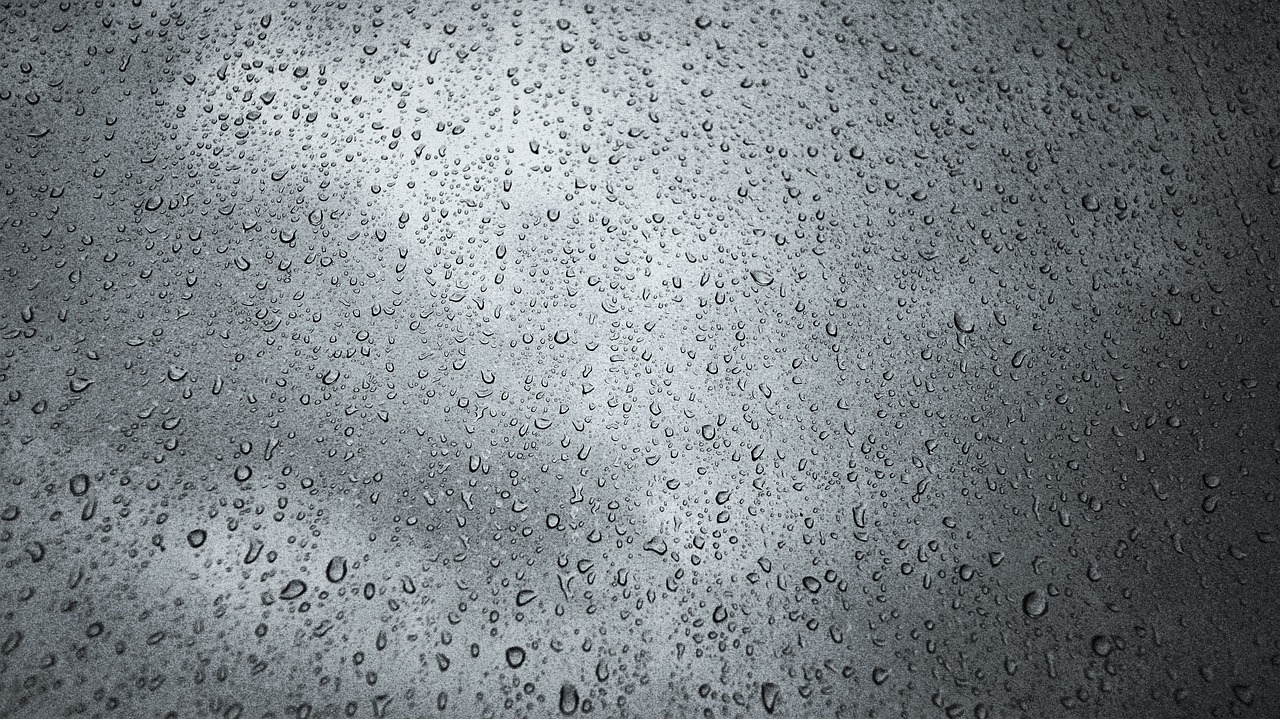
Benefits of Rain Barrels
Rain barrels are not just trendy garden accessories; they are a game changer for anyone looking to conserve water and save money. By collecting rainwater, you can significantly reduce your water bills, especially during the hot summer months when your garden craves hydration. Imagine having a reservoir of fresh, free water right in your backyard, ready to nourish your plants without the guilt of racking up those utility costs. Isn't that a win-win?
Beyond the financial perks, rain barrels promote eco-friendliness by reducing runoff and helping to prevent water pollution. When rainwater is allowed to flow freely from your roof and into the ground, it can carry pollutants and debris into storm drains, which eventually make their way into local waterways. By capturing this water, you're not only using a natural resource but also keeping your community's water supply cleaner.
Moreover, rain barrels provide a reliable water source for your garden during dry spells. When the clouds are sparse and your plants are thirsty, having a rain barrel can be a lifesaver. This is especially crucial for those who live in areas prone to drought. Instead of relying solely on municipal water, you can tap into your rain barrel and give your plants the hydration they need to thrive.
In addition to these benefits, rain barrels can also enhance the aesthetic appeal of your garden. With various designs and materials available, you can choose a rain barrel that complements your outdoor space. Whether you prefer a classic wooden barrel or a sleek modern design, there's something out there for everyone. You can even get creative and decorate your rain barrel, turning it into a unique garden feature.
Lastly, using rain barrels fosters a sense of community responsibility. When you take steps to conserve water and promote sustainable practices, you're setting an example for your neighbors and encouraging them to do the same. It’s like planting a seed of awareness that can grow into a larger movement towards environmental stewardship.
In summary, the benefits of rain barrels are multifaceted, covering financial savings, environmental protection, reliable water access, aesthetic enhancement, and community impact. If you're looking to make a positive change in your gardening practices, investing in a rain barrel is a step in the right direction!

Choosing the Right Rain Barrel
When it comes to selecting the perfect rain barrel for your garden, it's not just about picking the first one you see at the store. There are several factors to consider that can make a significant difference in how effectively you collect and use rainwater. Think of it as choosing a partner for your gardening journey; the right rain barrel will not only meet your needs but also enhance your outdoor space.
First off, you need to evaluate the size of the rain barrel. This decision is crucial because it directly impacts how much water you can collect. Consider the average rainfall in your area and the size of your garden. A larger barrel might seem appealing, but if your garden is small, it could take up too much space. Conversely, a smaller barrel may not provide enough water during dry spells. A good rule of thumb is to choose a barrel that can hold at least 50 to 100 gallons of water, depending on your garden's needs.
Next, let’s talk about material. Rain barrels come in various materials, each with its pros and cons. For example:
- Plastic: Lightweight and easy to move, plastic barrels are often the most affordable option. However, they may not be as durable as other materials.
- Wood: Wooden barrels offer a rustic aesthetic that can complement your garden beautifully. They are sturdy but may require more maintenance to prevent rot.
- Metal: Metal barrels are incredibly durable and can last for years. However, they can be heavier and may require a bit more effort to install.
Another important aspect to consider is the design features of the rain barrel. Look for models that include built-in spigots for easy access to the water, overflow valves to manage excess rainwater, and screens to keep debris and mosquitoes at bay. These features not only enhance the functionality of your rain barrel but also make it more user-friendly. Imagine having a rain barrel that not only collects water but also keeps your garden safe from pests—now that’s a win-win!
Lastly, think about the aesthetic appeal of the rain barrel. It should blend well with your garden's design and not be an eyesore. Many manufacturers offer barrels in various colors and styles, so you can choose one that complements your outdoor decor. After all, you want your rain barrel to be a functional piece of your garden, not just a storage unit. So, take your time, do your research, and choose wisely. Your garden will thank you!
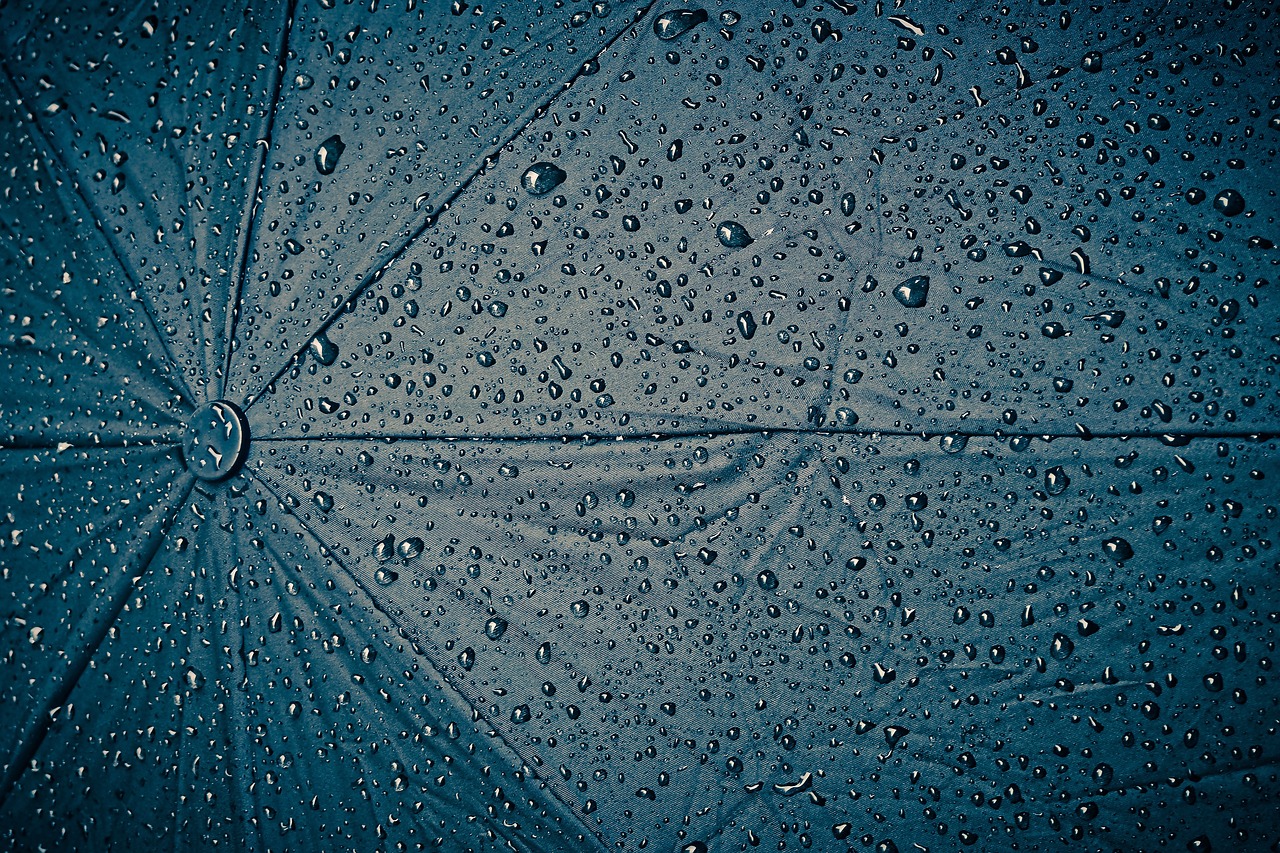
Size Considerations
When it comes to selecting the perfect rain barrel for your garden, size is not just a number; it's a crucial factor that can significantly impact your water conservation efforts. Think about it this way: if your rain barrel is too small, you might find yourself running out of water just when your plants need it the most. On the other hand, a barrel that's too large could take up valuable space and may not be necessary for your garden's needs. So, how do you strike the right balance?
First, consider the average rainfall in your area. This is where a little research pays off. You can easily find data on local precipitation levels online. For instance, if you live in a region that receives a substantial amount of rain, a larger barrel might be your best bet. However, if your area experiences sporadic showers, a smaller barrel could suffice. It's like choosing the right size of a sponge; you want one that can soak up enough water without being oversized and cumbersome.
Next, think about the size of your garden. A sprawling garden with a variety of plants will likely require more water than a small flower bed. To help you visualize this, consider creating a simple table that outlines your garden's needs versus your rain barrel's capacity:
| Garden Size (Square Feet) | Recommended Rain Barrel Size (Gallons) |
|---|---|
| 100-200 | 50-75 |
| 200-500 | 75-100 |
| 500+ | 100+ |
This table is just a guideline, of course, but it can help you make an informed decision. Additionally, consider how often you plan to use the collected rainwater. If you're watering a large vegetable garden or maintaining a lush flower bed, you might want to err on the side of a larger barrel. Conversely, if you're just using it for occasional watering, a smaller option might be perfectly adequate.
Lastly, don't forget about the space where you'll place your rain barrel. Measure the area to ensure that the barrel fits comfortably without obstructing walkways or garden aesthetics. It's like fitting a new piece of furniture in your living room; you want it to complement your space without crowding it. By taking these size considerations into account, you'll be well on your way to selecting the ideal rain barrel that meets both your garden's needs and your personal preferences.
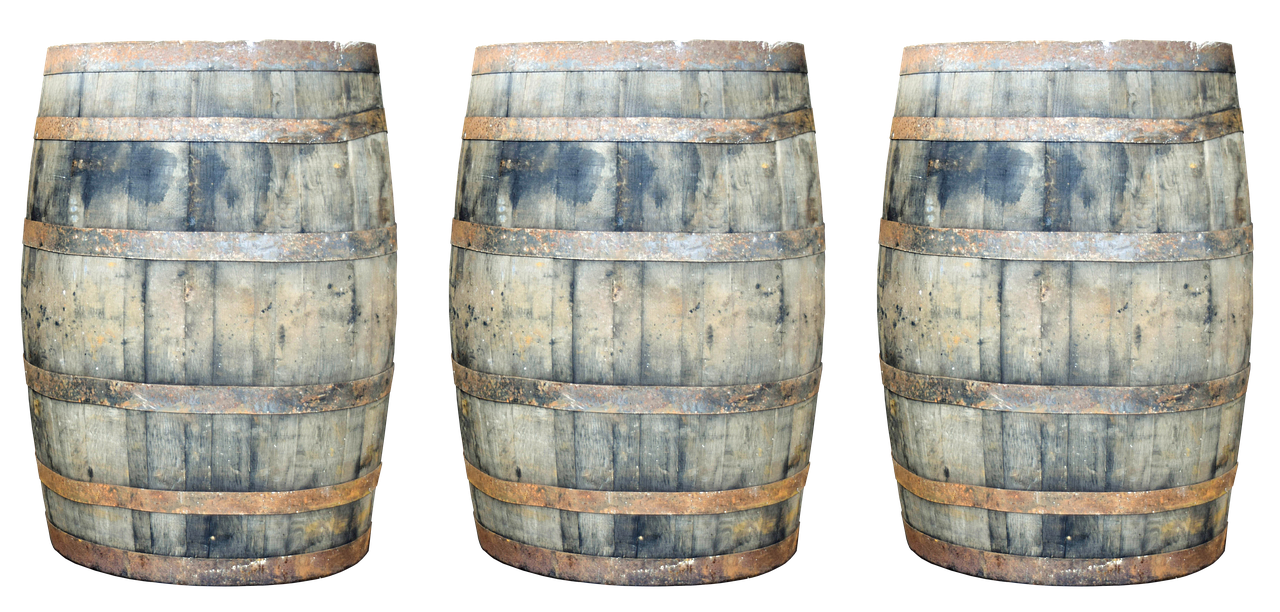
Material Options
When it comes to choosing the right rain barrel, the material is a crucial factor that can influence both the durability and aesthetic appeal of your garden setup. Different materials offer unique benefits, so it's essential to consider what fits best with your gardening style and environmental needs. Let's dive into some popular options:
Plastic rain barrels are perhaps the most common choice among gardeners. They are lightweight, affordable, and come in a variety of colors and styles. One of the significant advantages of plastic barrels is their resistance to rust and decay, making them a long-lasting option. However, it's important to choose UV-resistant plastic to prevent deterioration from sunlight exposure.
On the other hand, wooden rain barrels can add a rustic charm to your garden. They are often made from cedar or redwood, which are naturally resistant to rot. While they can be more expensive than plastic options, many gardeners appreciate their aesthetic appeal and how they blend seamlessly into natural landscapes. Just remember that wooden barrels may require more maintenance, such as sealing and staining, to keep them in good condition.
For those looking for an industrial look, metal rain barrels are an excellent choice. Typically made from galvanized steel or aluminum, these barrels are incredibly durable and can withstand harsh weather conditions. They often have a longer lifespan than plastic barrels, but they can be heavier and more challenging to install. Additionally, metal barrels can heat up quickly in the sun, which may affect the temperature of the water inside.
Here’s a quick comparison of the three materials:
| Material | Durability | Aesthetic Appeal | Maintenance | Cost |
|---|---|---|---|---|
| Plastic | High | Varied | Low | Low |
| Wood | Moderate | High | Moderate | Medium |
| Metal | Very High | Industrial | High | High |
Ultimately, the choice of material depends on your budget, aesthetic preferences, and how much maintenance you're willing to undertake. No matter which option you choose, investing in a rain barrel is a step towards sustainable gardening and conserving precious water resources.
- How much water can a rain barrel hold? Most rain barrels hold between 50 to 100 gallons, but larger options are available for bigger gardens.
- Can I use rainwater for drinking? While rainwater is generally safe for irrigation, it is not recommended for drinking without proper filtration and treatment.
- Do I need a permit to install a rain barrel? Regulations vary by location, so it's best to check with your local authorities regarding any permits or guidelines.
- How can I prevent mosquitoes from breeding in my rain barrel? Installing a screen over the top of the barrel can help keep mosquitoes out while still allowing rainwater to enter.
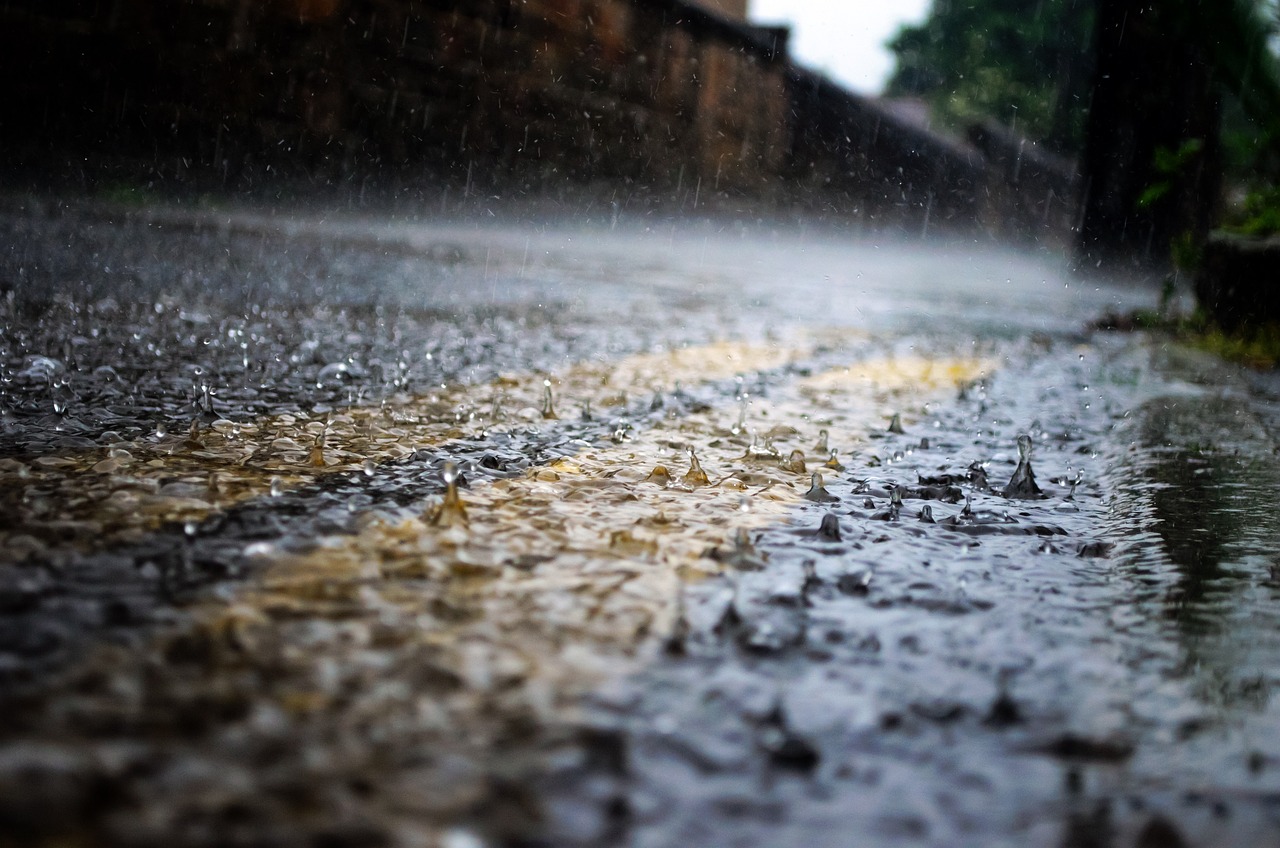
Design Features
When it comes to rain barrels, the can significantly enhance their functionality and ease of use. A well-designed rain barrel not only looks good in your garden but also maximizes water collection and minimizes maintenance hassles. One of the first things to consider is the presence of a built-in spigot. This feature allows you to easily access the collected water without having to lift or tilt the barrel. Imagine being able to effortlessly fill your watering can or connect a garden hose directly to the barrel—it's a game changer!
Another important design element is the overflow valve. This feature is crucial for managing excess water during heavy rains. Instead of allowing the barrel to overflow and create a mess, an overflow valve directs the surplus water away from the barrel, preventing erosion and ensuring that your garden remains intact. Think of it as a safety valve that protects your investment and your plants.
Additionally, consider rain barrels that come with screens or filters at the top. These screens serve as a barrier against leaves, debris, and even pesky mosquitoes. By keeping unwanted materials out, you not only maintain the cleanliness of the water but also prevent any potential breeding grounds for insects. It's like having a security system for your rainwater—keeping it safe and clean for your beloved plants.
Lastly, the color and aesthetic of the rain barrel can also play a role in your garden's overall look. While functionality is key, you don’t want a bulky, unattractive barrel ruining your garden's vibe. Many modern rain barrels come in various colors and designs that can complement your outdoor decor. Whether you prefer a rustic wooden look or a sleek modern plastic finish, there’s a rain barrel out there that can blend seamlessly into your garden.
In summary, when selecting a rain barrel, pay attention to the design features that can enhance your gardening experience. A built-in spigot, overflow valve, and screens are vital for functionality, while the color and style can ensure that your rain barrel is not just practical but also a beautiful addition to your outdoor space.
- How much water can I collect with a rain barrel? The amount varies based on the size of the barrel and the amount of rainfall in your area. A typical 50-gallon barrel can collect a significant amount of water during a good rain.
- Can I use rainwater for drinking? While rainwater can be used for irrigation, it is not recommended for drinking without proper filtration and treatment.
- Do I need a permit to install a rain barrel? Regulations vary by location, so check with your local government to see if any permits are required.
- How do I prevent mosquitoes from breeding in my rain barrel? Using screens or covers, as well as ensuring that the barrel is properly maintained, can help prevent mosquito breeding.

Installation Process
Installing a rain barrel can be an exciting DIY project that not only promotes sustainability but also enhances your garden's efficiency. The process is relatively straightforward, requiring just a few basic tools and a bit of knowledge about your home's gutter system. First things first, you need to choose the perfect spot for your rain barrel—ideally, it should be located beneath a downspout to effectively catch rainwater from your roof. This placement is crucial, as it maximizes water collection and minimizes overflow.
Before you start, gather your tools and materials. You will typically need a rain barrel, a downspout diverter, a drill (if necessary), and a level to ensure your barrel sits evenly. If your rain barrel doesn’t come with a built-in spigot, you may also need a hose or faucet attachment to make accessing the water easier. The installation process generally involves the following steps:
- Prepare the Area: Clear the space where you plan to place the rain barrel. Ensure the ground is level to prevent tipping.
- Attach the Downspout Diverter: Cut the downspout and install the diverter according to the manufacturer's instructions. This device will direct water into your rain barrel while allowing excess water to flow through the downspout.
- Position the Rain Barrel: Place the barrel under the diverter. Make sure it's stable and secure.
- Connect the Spigot: If your barrel has a spigot, attach it now. This will make it easy to access the collected water for your garden.
Once everything is set up, it’s essential to check for leaks. Turn on the rain and watch how the water flows into the barrel. If you notice any leaks, adjust the fittings or seals as necessary. And voilà, you've successfully installed your rain barrel! This simple addition to your garden will not only help conserve water but also provide you with a free source of irrigation during those dry spells.
Remember, the installation process may vary slightly depending on the specific model of your rain barrel and your home’s gutter system. However, following these general guidelines will help ensure a successful setup. Now that you've taken this step towards sustainable gardening, it’s time to enjoy the benefits of your new rain barrel!
- How much rainwater can a rain barrel collect? A typical rain barrel can hold anywhere from 50 to 80 gallons of water, depending on its size.
- Can I use rainwater for drinking? While rainwater can be used for irrigation, it is not recommended for drinking without proper filtration and treatment.
- How do I prevent mosquitoes in my rain barrel? Install a fine mesh screen over the top of the barrel to keep mosquitoes and other debris out.
- What should I do if my rain barrel freezes in winter? Make sure to empty your rain barrel before winter and store it in a sheltered location to prevent damage.
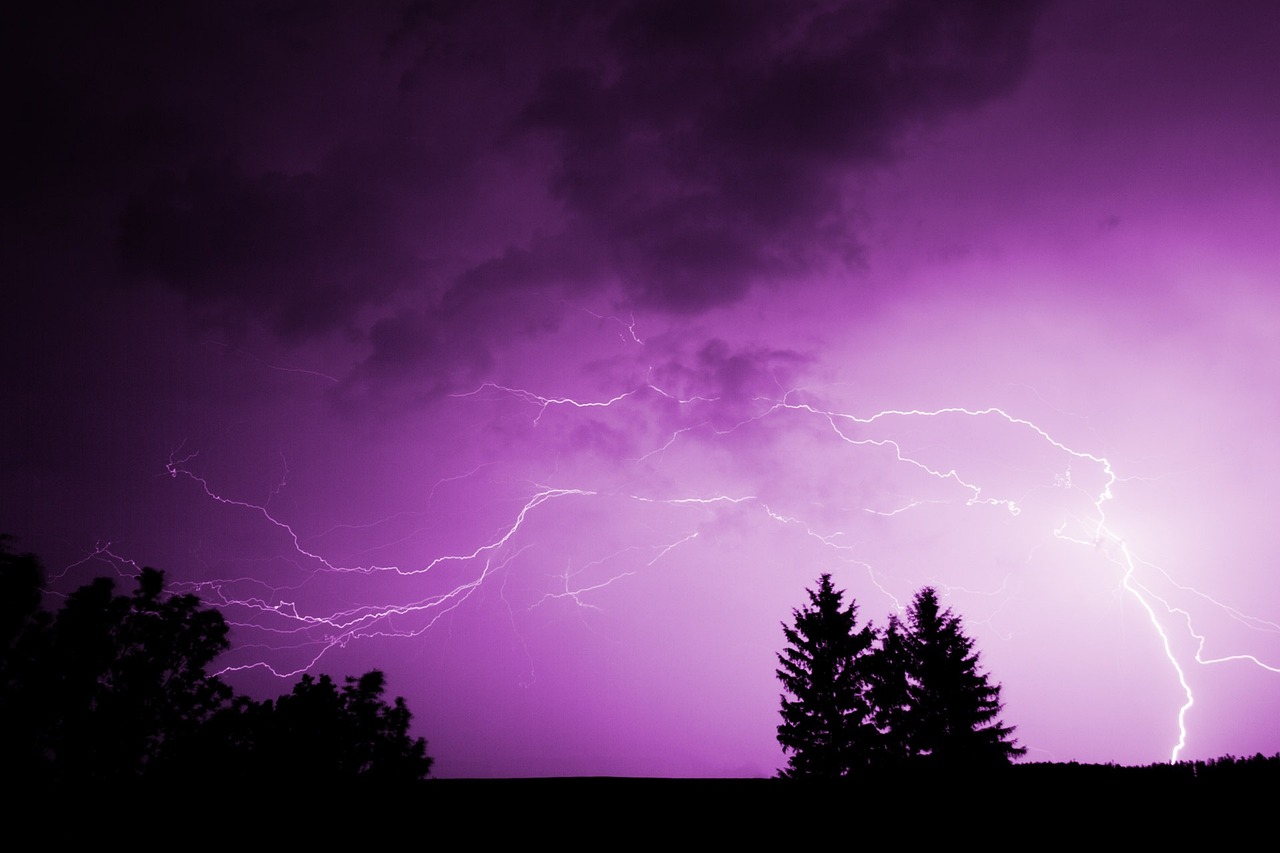
Maintenance Tips
Maintaining your rain barrel is crucial for ensuring that it functions effectively and continues to provide a reliable source of water for your garden. Just like any other piece of equipment, a little regular care goes a long way. First and foremost, it's essential to clean your rain barrel regularly. This helps prevent algae growth and keeps the water safe for your plants. You can do this by rinsing out the barrel with a hose and scrubbing the interior with a brush to remove any buildup. Aim to clean your rain barrel at least once a season, or more often if you notice any signs of contamination.
Another important aspect of maintenance involves checking for leaks. Over time, seals and joints can wear down, leading to potential leaks that can waste precious water. A simple visual inspection will help you identify any problematic areas. If you find a leak, use waterproof tape or sealant to fix it promptly. This not only conserves water but also ensures that your barrel is collecting as much rainwater as possible.
As the seasons change, it's vital to consider the winterization of your rain barrel. In colder climates, freezing temperatures can cause damage to the barrel and its components. To winterize, first, drain the barrel completely to prevent any water from freezing inside. Once drained, disconnect it from your gutter system and store it in a dry place, ideally indoors. If you prefer to leave it outside, you can turn it upside down to prevent water accumulation. This simple step ensures that your rain barrel is ready to go when the rainy season returns.
To summarize, here are the key maintenance tasks to keep your rain barrel in top shape:
- Clean the barrel at least once a season.
- Inspect for leaks regularly and repair them promptly.
- Winterize your barrel to protect it from freezing temperatures.
By following these maintenance tips, you can enjoy the benefits of your rain barrel for many seasons to come, ensuring your garden remains lush and vibrant while conserving water. Remember, a little attention goes a long way in sustaining your gardening efforts and protecting our precious natural resources.
Here are some common questions related to rain barrel maintenance that many gardeners have:
- How often should I clean my rain barrel? It's best to clean your rain barrel at least once a season, or more frequently if you notice algae or debris.
- Can I use rainwater from my barrel for drinking? While rainwater can be used for irrigation, it's generally not recommended for drinking unless properly filtered and treated.
- What should I do if my rain barrel has a leak? Inspect the barrel and use waterproof tape or sealant to repair any leaks as soon as you notice them.
- How do I winterize my rain barrel? Drain the barrel completely, disconnect it from the gutter system, and store it upside down or indoors to prevent damage from freezing temperatures.

Cleaning Your Rain Barrel
Cleaning your rain barrel is not just a chore; it’s a vital step in ensuring that your garden thrives on the best quality water. Imagine your rain barrel as a reservoir, a treasure chest of nature’s bounty, waiting to nourish your plants. If the water inside becomes contaminated, it can lead to algae growth and other issues that may harm your garden rather than help it. So, how do you keep this essential tool in tip-top shape? Let’s dive into some practical steps for maintaining a clean and efficient rain barrel.
First and foremost, it’s important to establish a regular cleaning schedule. Ideally, you should clean your rain barrel at least twice a year—once in the spring before the rainy season begins and again in the fall after the last rains. This ensures that any debris, leaves, or insects that might have settled in there are removed before they can cause any problems. But, if you notice any signs of algae or an unpleasant odor, don’t hesitate to clean it out immediately.
To clean your rain barrel effectively, gather the following supplies:
- Water hose
- Soft brush or sponge
- White vinegar or a mild bleach solution
- Bucket
Start by emptying your rain barrel completely. You can use the collected water for your garden or other outdoor tasks. Once it’s empty, rinse the inside with a water hose. This will help to remove any loose debris. Next, prepare your cleaning solution. If you opt for vinegar, mix equal parts of water and vinegar. If you choose bleach, make sure to dilute it properly—about one part bleach to ten parts water. Remember, bleach can be harsh, so use it sparingly and rinse thoroughly afterward to avoid any residue that might harm your plants.
Now, take your soft brush or sponge and scrub the interior surfaces of the barrel. Pay special attention to corners and crevices where dirt and algae like to hide. After scrubbing, rinse the barrel thoroughly with clean water to remove any cleaning solution. It’s crucial that no traces of vinegar or bleach remain, as these could be harmful to your plants. Finally, let your rain barrel dry completely before refilling it with rainwater. This ensures that any remaining moisture doesn’t encourage mold or mildew growth.
Don’t forget to clean the lid and any screens or filters you have in place. These components are crucial for keeping debris out of your rain barrel and preventing mosquitoes from breeding. A quick rinse and scrub will do the trick!
In summary, keeping your rain barrel clean is essential for maintaining a healthy garden. By following these simple steps, you can ensure that your rain barrel remains a reliable source of fresh, clean water for your plants. Remember, a little maintenance goes a long way in preserving the health of your garden and promoting sustainable gardening practices.
Q: How often should I clean my rain barrel?
A: It’s recommended to clean your rain barrel at least twice a year, ideally in the spring and fall. However, if you notice algae or odors, clean it right away.
Q: Can I use soap to clean my rain barrel?
A: It’s best to avoid using soap, as residues can harm your plants. Instead, use vinegar or a mild bleach solution for cleaning.
Q: What should I do if I find mosquitoes in my rain barrel?
A: Ensure that your rain barrel has a tight-fitting lid and screens to prevent mosquitoes from accessing the water. If they’re already present, clean the barrel thoroughly to eliminate any larvae.
Q: Is it safe to use rainwater for vegetable gardens?
A: Yes, as long as your rain barrel is clean and properly maintained, rainwater is safe for watering vegetable gardens.

Winterizing Your Rain Barrel
As the chilly months approach, it's crucial to think about how to protect your rain barrel from the harsh winter weather. Just like you wouldn't leave your favorite garden tools out in the snow, your rain barrel needs some TLC to ensure it remains in top condition for the next rainy season. Winterizing your rain barrel is not only about protecting the barrel itself but also about making sure the water you’ve collected remains safe and usable when spring rolls around.
First off, it's essential to empty the rain barrel completely. Any water left inside can freeze and expand, potentially causing cracks or damage to the barrel. If you’ve been diligent about collecting rainwater, you might have quite a bit stored up. Use this water to hydrate your winter garden plants or even fill up your compost pile! Once the barrel is empty, clean it out thoroughly to prevent algae growth or any lingering bacteria from taking hold over the winter months.
Next, consider disconnecting the downspout that feeds into your rain barrel. This will prevent any additional rainwater from entering the barrel during the winter, which could lead to overflow issues if the barrel is not properly secured. Additionally, you may want to cover the top of the barrel with a tight-fitting lid or a tarp. This will keep out debris, leaves, and any critters looking for a cozy place to hibernate. Just imagine a squirrel making your rain barrel its winter home—definitely not what you want!
For those living in areas with particularly harsh winters, storing the barrel indoors is a great option. If you have the space in your garage or shed, this will provide the best protection against freezing temperatures. If indoor storage isn’t feasible, consider wrapping your barrel with insulation material, such as foam, to help shield it from the cold. This is akin to putting on a warm coat before heading out into the frosty weather!
Lastly, don't forget to inspect the spigot and any hoses connected to your rain barrel. Make sure they are drained and stored away to prevent any damage from freezing temperatures. A simple way to do this is to run water through them one last time to ensure they’re empty. If your rain barrel has a built-in overflow valve, make sure that it is securely closed as well. By taking these steps, you’ll be ready to welcome the spring rains with open arms and a perfectly functioning rain barrel!
- How often should I winterize my rain barrel? It's best to winterize your rain barrel every year before the first frost hits.
- Can I leave my rain barrel outside during winter? While it's possible, it's not recommended unless you take proper precautions like insulation and ensuring it's completely empty.
- What happens if I forget to winterize my rain barrel? If you forget, the water inside can freeze, potentially cracking the barrel and damaging any connected parts.
- Is it necessary to clean my rain barrel before winterizing? Yes, cleaning helps prevent algae growth and keeps the water safe for use when spring arrives.
Frequently Asked Questions
- What is a rain barrel and how does it work?
A rain barrel is a container designed to collect and store rainwater from your roof. It works by directing the rainwater that falls on your roof into the barrel through your home's gutter system. This stored water can then be used for watering your garden, washing your car, or other outdoor uses, helping to conserve water and reduce your utility bills.
- How much water can a rain barrel hold?
Rain barrels come in various sizes, typically ranging from 50 to 100 gallons. The amount of water you can collect depends on the size of your barrel and the amount of rainfall in your area. For example, a 50-gallon barrel can capture about 300 gallons of water from a 1-inch rain event if your roof area is large enough.
- Do I need a special permit to install a rain barrel?
In most areas, you do not need a special permit to install a rain barrel. However, it's always a good idea to check with your local regulations or municipal guidelines to ensure compliance with any specific rules regarding rainwater collection.
- How do I maintain my rain barrel?
Maintaining your rain barrel is crucial for its longevity and effectiveness. Regularly clean the barrel to prevent algae growth and check for leaks. It's also important to winterize your barrel by emptying it and storing it in a safe place during freezing temperatures to prevent damage.
- Can rainwater collected in a barrel be used for drinking?
While rainwater is generally safe for irrigation, it is not recommended for drinking without proper filtration and treatment. Rain barrels can collect debris, pollutants, and contaminants, so if you need drinking water, consider using a proper filtration system.
- What features should I look for in a rain barrel?
When selecting a rain barrel, look for features such as a built-in spigot for easy access to water, overflow valves to prevent spillage during heavy rains, and screens to keep debris and mosquitoes out. These features enhance the functionality and usability of your rain barrel.
- How do I install a rain barrel?
Installing a rain barrel is a straightforward DIY project. You’ll need basic tools and a good understanding of your gutter system. Position the barrel under a downspout, connect it to the downspout using a diverter or cut the downspout to direct water into the barrel, and ensure it is stable and level.



















